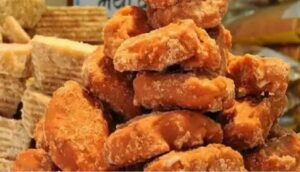Delhi has seen many empires and cuisines due to travellers, traders and invaders from different regions of the world. Today the empire of snacks is ruled by the so-called king of snacks “Samosa”.
This is one food that has travelled far and wide, and like any popular traveller has left its footprints along the way. From Egypt to Libya and from Central Asia to India, the stuffed triangle with different names has garnered immense popularity.
Originally named samsa, after the pyramids in Central Asia, historical accounts also refer to it as sanbusak, sanbusaq or even sanbusaj, all deriving from the Persian word “Sanbosag”. In South Asia, it was introduced by the Middle Eastern chefs during Delhi Sultanate period.
The first mention of samosas was found in Abolfazl Beyhaqi’s work Tarikh-e Beyhaghi in 10th century, where it is referred to as sambosa.
Back in the day, these mince-stuffed triangles were used as a snack by travellers embarking on long journeys, as these made for an easy-to-consume yet filling food choice that could be packed in saddlebags and eaten on the go. It was with these travellers that the sambosa or samosa, also known as assanbusak, sanbusaq, sanbusaj or samsa – all derivatives of the Persian word ‘sanbosag’ – arrived on the South Asian culinary scenery.
Amir Khusro (1253–1325), a scholar and the royal poet of the Delhi Sultanate, wrote in around 1300 that the princes and nobles enjoyed the “samosa prepared from meat, ghee, onion and so on”.
Ibn Battuta, a 14th-century traveller and explorer, describes a meal at the court of Muhammad/Bin-Tughluq, where the samushak or sambusak, a small pie stuffed with minced meat, almonds, pistachios, walnuts and spices, was served before the third course, of pulao.
The Ain-i-Akbari, a 16th-century Mughal document, mentions the recipe for qutab, which it says, “the people of Hindustan call sanbúsah”.
Today, samosa is a popular snack in many parts of the world. Perhaps its biggest secret to popularity and survival over the centuries is its different varieties of fillings catering to various tastes across the globe. In Kazakhstan, for example, a somsa is typically baked and has a thicker, crumblier crust. Fillings generally range from minced lamb and onions, meat, and even pumpkin. In Portugal, it has both veg and non-veg filling and called ‘Patties’.
In India, the Hyderabadi luqmi, on the other hand, is strictly meat-filled and far crustier than the regular samosa consumed elsewhere in India. In Pakistan due to thin outer crisp layer called as ‘Paper Samosa’.
In the Middle East, the semicircular sambusak is stuffed with feta cheese, onions, minced chicken and meat, spinach, and in case of Jewish cuisine, mashed chickpeas.
Nevertheless, from its humble beginnings — in older days, people would cook the mince-filled triangles over campfire and eat them as snacks during travel —samosa has come a long way. And after having earned the blessings of the Indian royalty, the snack soon became food fit for the king of snacks.
(Views are personal)
Harsh Pathak is a lawyer by profession and an amateur connoisseur of natural, historical and cultural heritage of Delhi.



















